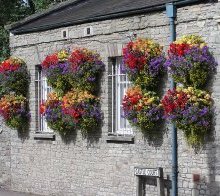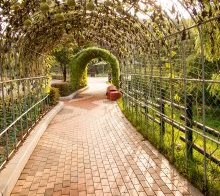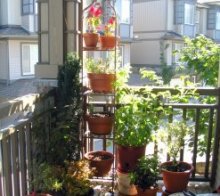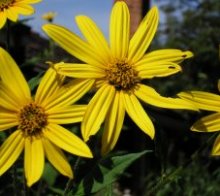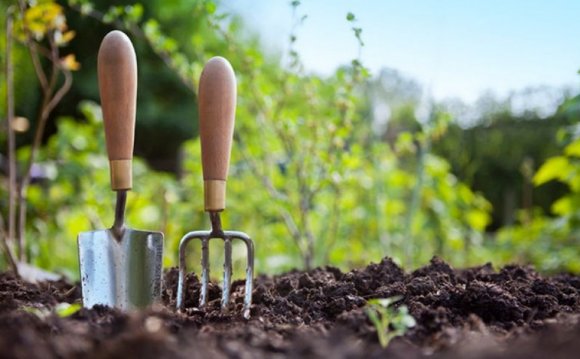
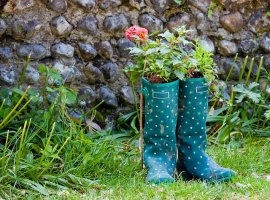 The folks at Dancing Rabbit Eco-village have been doing this for years, and I can tell you from personal experience, there’s nothing better than walking out your front door to harvest an armload of fresh beets for supper. (If you want to see some cutting edge eco-gardening first hand and pick up a few insider tricks of the trade from the experts, consider visiting Dancing Rabbit sometime soon.)
The folks at Dancing Rabbit Eco-village have been doing this for years, and I can tell you from personal experience, there’s nothing better than walking out your front door to harvest an armload of fresh beets for supper. (If you want to see some cutting edge eco-gardening first hand and pick up a few insider tricks of the trade from the experts, consider visiting Dancing Rabbit sometime soon.)
Below you will find the Tiny House Blog top 10 tips for gardening in tiny spaces.
10. Build an herb spiral.
Herbs are an invaluable resource when it comes to turning your bland day-to-day staples into delicious meals that will amaze your friends and family.
The herb spiral is the best of all worlds, if you want to grow them in a container. It’s compact, low-maintenance, and provides ideal habitat for a wide range of different plants. Varieties that prefer drier conditions, like rosemary and nettles, will have a happy home at the top of the spiral, while plants that need a little extra water, such as mint, will be able to keep their feet wet near the bottom.
The spiral can also hold a large amount of soil, which will give your plants plenty of room to grow and flourish. You will even have some nooks and crannies for plants like creeping thyme to take up residence, without robbing valuable space from your favorite herbs and flowers, like chamomile and Echinacea.
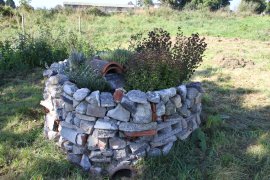 9. Optimize your vertical space.
9. Optimize your vertical space.
By finding a way to make use of vertical space in your gardening area, you have the potential to multiply the surface area plants can use to produce something for you by several factors.
Install some shelves and trellises along your walls to catch that sunlight. Add a hook anywhere you can to hang a plant. If you don’t have much vertical structure to utilize, build it. Whatever you invest here will pay huge dividends in terms of produce over time.
8. Stack functions.
Take some time to decide what you really want out of your garden.
Is privacy a priority? Do you want a beautiful spot to relax, full of flowers and colorful foliage? Do you want to grow your own tea and medicine? Or are you looking to reduce your food bill by growing your own organic greens?
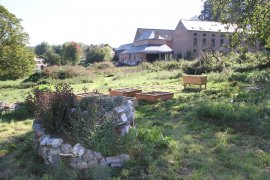 Whatever your goals are, when you’re working within a limited space, it’s important that each plant you select be able to meet more than one need.
Whatever your goals are, when you’re working within a limited space, it’s important that each plant you select be able to meet more than one need.
For example, if you want a privacy screen, you can grow something like Jerusalem artichokes. They’re tall and produce dense foliage, which is perfect for warding off the prying eyes of neighbors and shading plants that don’t need sun throughout the day. In the meantime, they bloom with lovely yellow flowers while yielding pounds of delicious edible tubers – they even provide a habitat for natural predators that will protect your other plants from pests without having to spray harsh chemicals.
7. Keep aesthetics in mind.
To get the most out of your tiny house garden, it needs to be beautiful.
Spend some time sitting in the space where your garden is going to be and imagine how you would like it to look. Consider your views from different windows, or how passersby will see it from the street.
Choose your focal point. Combine different shapes and sizes of plants. Mix up your colors or go for a sophisticated monochromatic scheme. Draw the eye to different sections of the garden with trailing vines, and throw in a few tasteful ornaments to inspire you.
6. Learn about companion planting.
Plants are often specialists, so they definitely benefit from a little teamwork. If you know what your plants do best, you can put them together in carefully designed plant guilds where the whole is greater than the sum of its individual parts.
For instance, some flowers, such as asters or hollyhocks, work wonders for attracting pollinators to your favorite fruit crops, like tomatoes. Others are fragrant, confusing pest insects by making it more difficult for them to find places to lay their eggs. The most widely known example of companion planting is the Indigenous American ‘three sisters’ garden, consisting of corn, beans and winter squash, (sometimes including sunflowers as well).
